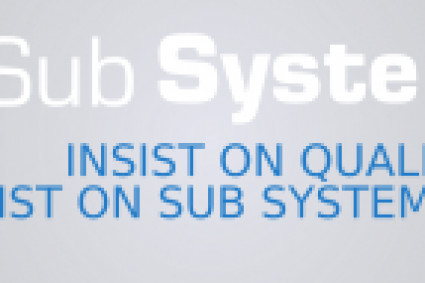Cloud and on-premise IT infrastructure are two distinct approaches to managing and delivering computing resources like Dell laptops in Sri Lanka and software solutions, for businesses and organizations. Here are the key differences between them:
1. Location and Ownership:
· On-Premise: In an on-premise IT infrastructure, all hardware, servers, and networking equipment are physically located within the organization's premises. The organization is responsible for purchasing, maintaining, and managing the hardware and infrastructure. For example, a business may choose to purchase the best corporate laptops in Sri Lanka since it would be an asset to have such quality equipment.
· Cloud: Cloud infrastructure, on the other hand, is hosted and managed by third-party service providers. The hardware and infrastructure are located in data centres, and users access resources and services over the internet.
2. Capital Expenditure vs. Operating Expenditure:
· On-Premise: Setting up requires a significant upfront capital investment. The organization must purchase servers, networking equipment, and other hardware, as well as invest in infrastructure design and implementation. For example, the Dell desktop price in Sri Lanka at the moment can be very high, which means using a service like DaaS (Desktop as a Service) would be more beneficial for companies.
· Cloud: Cloud infrastructure operates on a pay-as-you-go model, turning capital expenditures into operational expenditures. Organizations pay for the resources they use, typically on a monthly or hourly basis, which can be more cost-effective for certain workloads and organizations.
3. Scalability:
· On-Premise: Scaling can be challenging and time-consuming. Organizations need to forecast their future needs and purchase additional hardware to accommodate growth.
· Cloud: Cloud services offer almost instant scalability. Users can easily adjust their resource allocation based on demand, either by adding or removing resources, without the need for physical intervention.
4. Maintenance and Management:
· On-Premise: The organization is responsible for maintaining and managing the entire on-premise infrastructure, including hardware updates, security patches, and backups.
· Cloud: Cloud providers handle the maintenance and management of the underlying infrastructure, including hardware updates and security, freeing up the organization's IT staff to focus on other tasks.
5. Accessibility:
· On-Premise: Access to them is limited to the organization's physical location or connected networks.
· Cloud: Cloud infrastructure can be accessed from anywhere with an internet connection, providing greater flexibility for remote work and accessibility to resources.
6. Security and Compliance:
· On-Premise: Organizations have direct control over security measures and compliance protocols in such an environment.
· Cloud: These providers implement robust security measures, but some organizations may have specific regulatory requirements that necessitate certain data and infrastructure to remain on-premise.
7. Downtime and Reliability:
· On-Premise: Downtime can occur during hardware failures or maintenance windows, and it is the responsibility of the organization to manage redundancy and high availability.
· Cloud: Cloud providers typically offer high levels of reliability and uptime through redundancy and failover mechanisms built into their infrastructure.
The choice between cloud and on-premise infrastructure depends on various factors, including the organization's size, budget, security requirements, scalability needs, and the type of applications and workloads being run. Many organizations adopt a hybrid approach, using a combination of cloud and on-premise resources to suit their specific needs.
How can cloud and on-premise IT infrastructures help with preparing for a hybrid workforce?
Both cloud and on-premise IT infrastructures can play crucial roles in preparing for a hybrid workforce, where employees work both on-site and remotely. Here is how each approach can contribute to supporting a hybrid workforce:
1. Cloud Infrastructure for Remote Work:
· Remote Accessibility: Cloud services enable remote access to applications, data, and resources, allowing employees to work from anywhere with an internet connection. This accessibility is essential for supporting remote workers in a hybrid setup.
· Scalability and Flexibility: Cloud services can easily scale resources up or down based on demand. As the number of remote workers fluctuates, cloud infrastructure can dynamically adjust to accommodate the changing needs of the organization.
· Collaboration Tools: Cloud-based collaboration tools, such as cloud storage, file sharing, and communication platforms, facilitate seamless teamwork and communication among on-site and remote employees.
· Disaster Recovery and Business Continuity: Cloud providers often offer robust disaster recovery solutions, ensuring that critical data and applications are protected and accessible even in the event of on-premise disruptions.
2. On-Premise Infrastructure for On-Site Work:
· Local Access and Performance: On-premise infrastructure ensures fast and reliable access to applications and resources for on-site employees, without being dependent on internet connectivity.
· Data Security and Compliance: For certain industries or organizations with strict data security and compliance requirements, hosting sensitive data on-premise can provide additional control and meet regulatory standards.
· Legacy Systems and Specialized Workloads: Some organizations might have legacy systems or specialized workloads that are better suited to on-premise infrastructure due to technical limitations or specific hardware dependencies.
3. Hybrid Approach:
· Flexibility and Agility: A hybrid IT infrastructure allows organizations to take advantage of the benefits of both cloud and on-premise solutions. They can choose which workloads and applications are best suited for each environment based on factors like performance, security, and cost.
· Redundancy and Failover: Hybrid setups can provide redundancy and failover capabilities, where critical applications and data can be replicated across both cloud and on-premise environments to ensure high availability.
· Cost Optimization: By strategically allocating workloads to either cloud or on-premise resources, organizations can optimize costs based on their budget and usage patterns.
· Gradual Transition: For organizations in the process of migrating from traditional on-premise setups to the cloud, a hybrid approach allows for a gradual transition, enabling them to maintain existing systems while adopting cloud technologies over time.
A combination of cloud and on-premise IT infrastructures allows businesses to create a flexible and resilient environment that supports the needs of a hybrid workforce. It provides employees with the tools they require to work efficiently, whether they are on-site or remote, while addressing the specific requirements and constraints of the organization.





